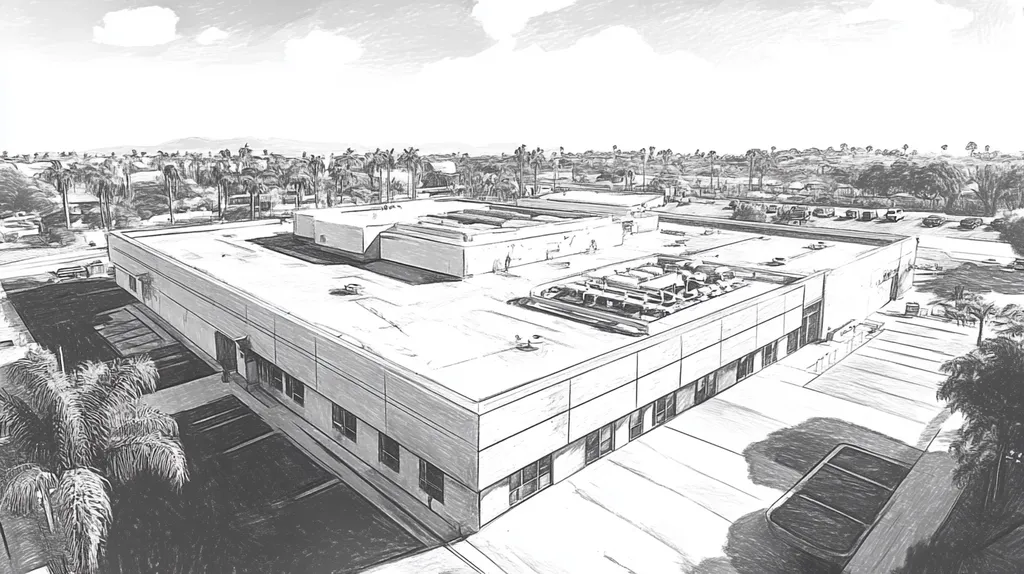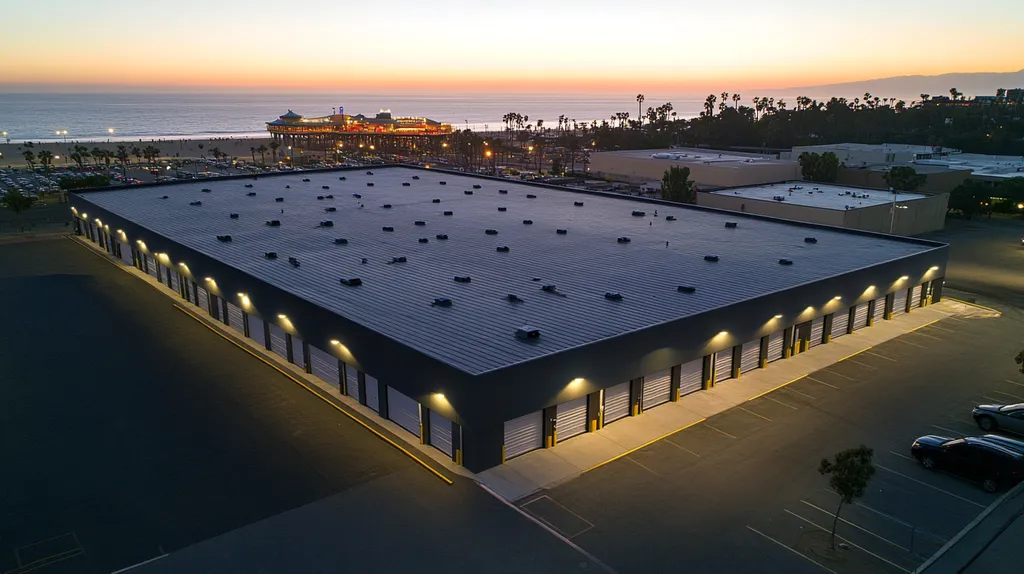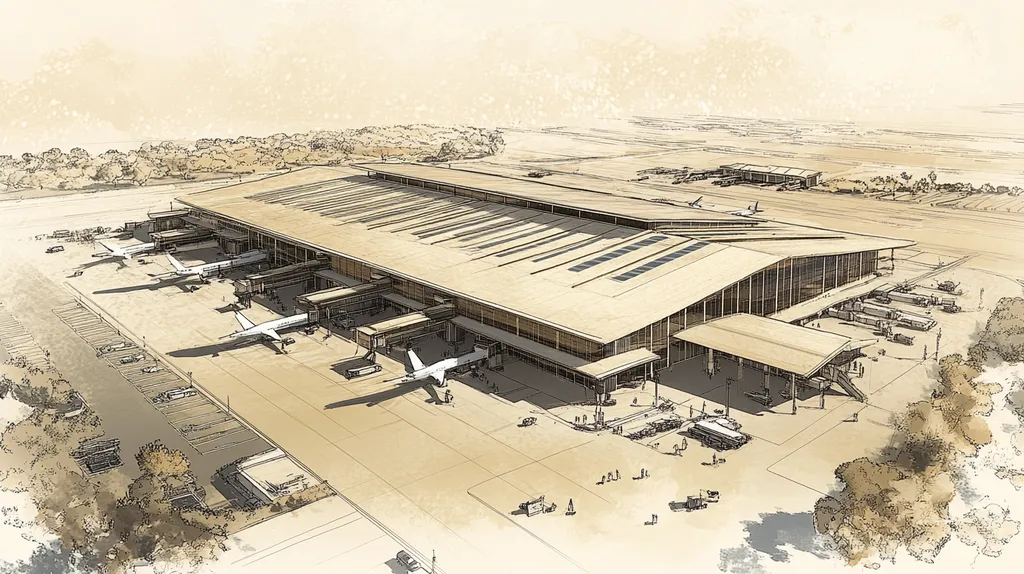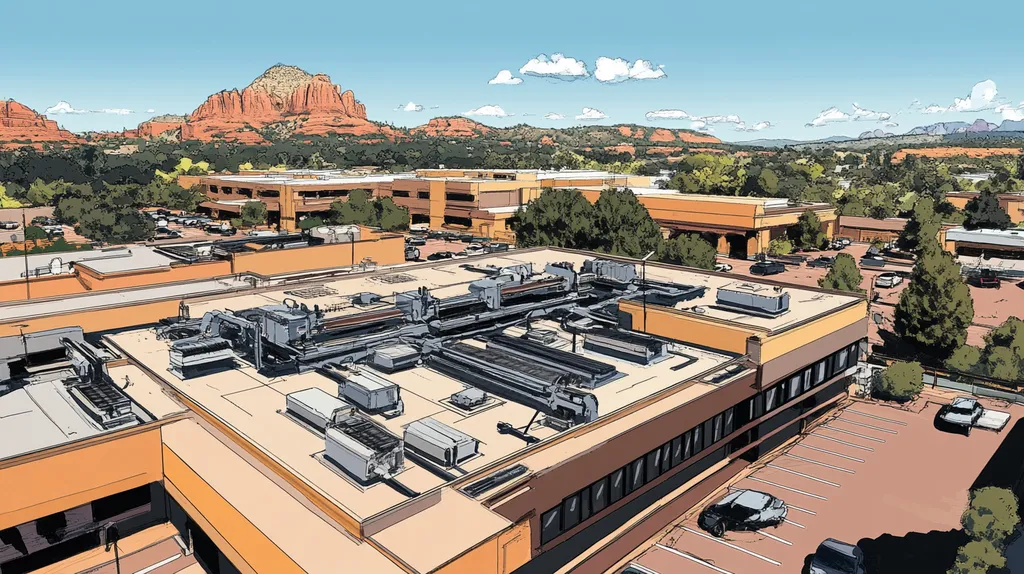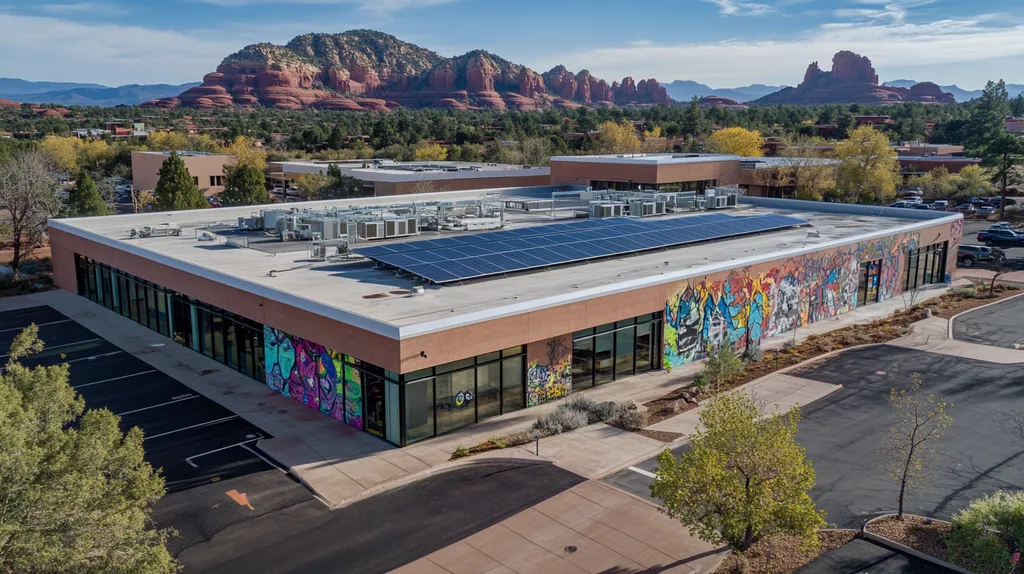In the high-stakes world of industrial roofing, blistering represents a $2.5 billion annual challenge that facility managers can’t afford to ignore. These troublesome bubbles beneath roof coatings can reduce a roof’s lifespan by up to 70% while creating perfect pathways for costly water damage.
From scorching summer heat to winter’s freeze-thaw cycles, multiple forces conspire to create these rooftop menaces. Understanding the conditions that lead to blistering isn’t just about preventing problems—it’s about protecting valuable assets and avoiding unexpected downtime.
This comprehensive guide examines the critical factors behind blister formation, offering practical solutions for property owners and facility managers who want to maximize their roofing investment.
SECTION 1: FUNDAMENTAL CONCEPTS
Blistering poses a serious threat to the reliability of industrial roofs. These bubbles can lead to damaging water infiltration and hefty repair bills, making it vital for property owners and facility managers to grasp the ins and outs of this issue. Alarmingly, statistics reveal that over 50% of roofing leaks can be traced back to blistering, underscoring the importance of a proactive approach.
Definition of Roof Blistering
Roof blistering is the unwelcome emergence of bubbles or pockets beneath the roofing membrane’s surface. These blisters arise when moisture or air becomes trapped between layers, creating pressure that can expand over time. If left unattended, these blisters can burst, exposing the underlying materials to harsh weather and other damaging elements.
Understanding what blistering looks like is the first step in safeguarding your roof. This phenomenon can occur across various roofing systems, including built-up roofs and single-ply membranes. By familiarizing themselves with the early signs of blistering, property owners can take preventative measures before the issue escalates.
In severe situations, unchecked blistering can lead to total roof failure, making regular inspections and maintenance essential for facility management teams. Early detection can not only save time and money but also preserve the integrity of the entire roofing system.
In summary, an informed understanding of blistering is crucial for implementing effective maintenance strategies. Property stakeholders must prioritize this knowledge to mitigate long-term risks and safeguard their investments.
Causes of Blister Formation
Blister formation on industrial roofs can result from a combination of factors. A leading culprit is the entrapment of moisture during roofing installation. If this moisture isn’t adequately dried out, it can expand when heated, resulting in blisters.
Using incompatible materials also plays a significant role. When the wrong type of roof coating is chosen, chemical reactions may occur that promote blistering. Moreover, poor adhesion between roofing layers can create weak spots where air and moisture accumulate.
Environmental influences cannot be overlooked either. Extreme temperature shifts can place stress on roofing materials, raising the risk of blistering. Think about roofs that experience intense sunlight during the day followed by a chill at night; they are particularly susceptible.
Additionally, inadequate maintenance can worsen blistering issues. Ignoring minor roof problems often leads to larger complications, including blistering. Understanding these causes is critical for developing robust intervention strategies.
Impact on Roof Integrity
The presence of blisters threatens the overall integrity of an industrial roof. As blisters enlarge and eventually burst, they create pathways for water to infiltrate, leading to extensive internal damage and costly repairs or replacements.
Furthermore, blistered roofs can weaken essential structural components. Ongoing water exposure can foster mold growth, decay, and insulation problems, leading to increased energy costs and diminished building performance.
Insurance claims linked to blister damage frequently arise, often resulting in rising premiums. For property owners, these financial repercussions can dwarf the original costs associated with proper roof maintenance.
Clearly, addressing blistering is not merely about aesthetics; it’s pivotal for upholding the building’s functionality and safety. Sound management practices can help businesses avoid unexpected downtime and unscheduled expenses.
SECTION 2: SYSTEM COMPONENTS
Grasping the components of industrial roofing systems is essential for property owners and facility managers. Each element plays a pivotal role in preventing blistering, a problem that can lead to costly repairs and safety risks. It’s alarming to note that a significant percentage of roof failures stem from poor material choices and improper installation. This section will delve into roofing membrane materials, adhesives and sealants, and substrate preparation, spotlighting their vital contributions to preserving roof integrity.
Roofing Membrane Materials
The selection of roofing membrane material is a game-changer when it comes to the risk of blistering. Common materials like TPO, PVC, and EPDM each offer distinct properties that influence how they expand and contract with temperature changes. If the membrane isn’t well-suited to the local climate, stress can build up, paving the way for blisters.
Moreover, some membranes are more porous and can trap moisture beneath the surface. As this moisture vaporizes over time, blisters can start to form. Choosing membranes that strike the right balance between durability and moisture resistance is crucial for long-lasting roofs.
Thickness is another key factor! Thinner membranes might reduce upfront costs but often lead to amplified risks of blistering in the long run. Investing in the right thickness can ultimately save money by lowering maintenance needs.
Let’s not overlook the installation techniques, either! Using proper application methods ensures a secure bond and eliminates air pockets that might become blistering hot spots.
Adhesives and Sealants
While adhesives and sealants might be hidden from view, they are absolutely essential in the fight against blistering. Choosing the wrong kind—like solvent-based adhesives in humid conditions—can weaken the roofing system’s integrity, allowing moisture to sneak in and create blisters.
Sealants are particularly important at joints and seams, which frequently become the weak points of a roof. If sealants don’t adequately safeguard these areas from water infiltration, blistering can follow. High-quality, compatible sealants are vital to ensuring optimal performance.
Application method matters too. Following manufacturer guidelines can significantly enhance adhesion, while improper mixing or insufficient coverage can lead to vulnerabilities, increasing the risk of moisture infiltration.
Timing is everything! Applying adhesives and sealants in extreme weather can hinder their curing, raising the chances of blister formation. Adhering to best practices at every stage of installation is indispensable for lasting results.
Substrate Preparation
The substrate—often seen as the roof deck or insulation—acts as the backbone of the roofing system. If it’s not prepared properly, the risk of blistering skyrockets due to moisture retention or contaminants disrupting adhesion. Testing moisture levels before installation is a necessity for pinpointing possible issues before they escalate.
Surface cleanliness and smoothness are equally important! Dirt, grease, or debris can create bonding obstacles for roofing materials. Ensuring a pristine, level substrate is a must for achieving installations that resist blistering over time.
Compatibility with the roofing system is essential too. Mismatched substrate materials can cause differential movement and stress on the membrane, leading to blister risks.
Lastly, addressing protrusions and installations on the substrate is critical. Properly flashing around vents and pipes can thwart moisture accumulation at these points—a common culprit behind blister formation. Thorough substrate preparation sets the stage for a robust roofing assembly.
SECTION 3: IMPLEMENTATION METHODS
Blistering in industrial roof coatings isn’t just a cosmetic issue; it’s a potentially disastrous problem that can lead to hefty repair bills and unexpected downtime. Statistics reveal that poorly managed roofs can incur repair costs exceeding 20% of the initial investment. To protect these assets, it’s essential to focus on proper installation techniques, moisture management strategies, and effective ventilation systems. Those who prioritize these methods can extend the life of their roofs and avoid costly mistakes.
Proper Installation Techniques
The foundation of a durable roofing system is solid installation techniques. Adhering strictly to manufacturer guidelines is vital for preventing blister issues. For example, ensuring that roofing materials are applied under the right temperature and humidity conditions can make a significant difference in adhesion quality.
It’s equally important to prepare the roofing substrate. The surface must be impeccably clean and dry prior to application; skipping this step can spell disaster. Remember, a spotless foundation is critical for a successful roofing endeavor!
Using compatible primer and underlayment materials enhances performance significantly. Selecting products that work harmoniously with the topcoat helps tailor the roofing system to resist blistering effectively.
Ongoing training for installation crews cannot be overlooked. Well-informed teams are less likely to skip crucial steps and are adept at spotting potential issues early on, ensuring a smoother installation process.
Moisture Management Strategies
Moisture is a notorious foe when it comes to blistering in industrial roof coatings. To combat this, robust moisture management strategies must be put in place. One effective approach includes using moisture detection systems before and during installation.
Monitoring moisture levels can help determine if a project should proceed or be delayed. This ensures that surfaces aren’t damp when coatings are applied, reducing the risk of trapping moisture beneath the layers.
Utilizing materials that allow moisture vapor to escape can also work wonders. Here, breathable coatings play a key role by letting trapped moisture evaporate, significantly lowering the chance of blister formation.
Regular inspections are essential to identify any sources of moisture infiltration. High-risk areas such as seams, flashing, and detail work should be scrutinized to detect hidden leaks before they escalate into bigger issues.
Ventilation and Drainage Systems
Effective ventilation and drainage systems are indispensable for preventing blistering. Without proper airflow, heat can accumulate beneath the roofing membrane, leading to coating failures. It’s vital for roofs to be designed to facilitate thermal movement, which helps relieve pressure within the system.
Incorporating reliable drainage systems is equally critical. Ensuring that water can flow off the roof surface prevents pooling, thereby reducing humidity and moisture retention that could later contribute to blistering.
Don’t forget about ventilation systems! Options like ridge vents or turbine vents enhance air circulation, further alleviating heat-related issues that might otherwise lead to damage.
Regular maintenance of these systems is non-negotiable. Scheduled cleanings help prevent blockages, maintaining roof integrity and ultimately safeguarding against blistering.
SECTION 4: MAINTENANCE REQUIREMENTS
The stakes for maintaining industrial roof coatings couldn’t be higher! Inadequate maintenance can lead to blistering and drastically shorten a roof’s lifespan, with studies revealing that nearly 25% of roofs fail prematurely due to overlooked upkeep. Regular maintenance is not just a preference; it’s essential for spotting vulnerabilities before they snowball into significant, costly issues. For facility managers, making maintenance a top priority is key to preserving valuable assets and extending the lifecycle of the roof.
Regular Inspection Protocols
Routine inspections are the cornerstone of a successful maintenance plan for industrial roofs. Property owners should make it a habit to conduct inspections at least twice a year—ideally in spring and fall—to catch issues early. These inspections should focus on inspecting critical areas such as flashing, seams, and spots where water tends to pool.
Don’t overlook the importance of inspections following severe weather events! Heavy rain or strong winds can expose weaknesses, making it imperative to have a trained professional assess potential storm damage. Early detection of wear is crucial in mitigating further complications.
Documenting every inspection is vital. Keeping a detailed history of the roof’s condition helps track changes over time, making it easier to identify patterns and plan for repairs or replacements. Without this record, property owners may miss critical maintenance needs that could lead to bigger issues down the line.
Ultimately, adopting a proactive inspection approach empowers facility managers to allocate resources wisely and boosts the chances of roof longevity. Regular checks are a small investment when compared to the hefty expenses tied to roof failures.
Debris Removal and Cleaning
Debris buildup on roofs can become a significant threat, with potential to accelerate blister formation. Items like leaves, branches, and dirt trap moisture, which can lead to deterioration of roofing materials. Therefore, routine debris removal is not just helpful—it’s essential for maintaining robust industrial roof coatings.
When it comes to cleaning solutions, caution is key. Avoid high-pressure washing, which may do more harm than good. Instead, opt for soft washing techniques that remove debris effectively while preserving the roof’s surface integrity. Clear drainage systems are just as crucial; they must be free of blockage to allow water to flow off easily.
Regularly clearing debris can prevent water from pooling, thereby minimizing the risk of blister development. It’s wise to schedule these cleanings after major storms or seasonal transitions to maintain the roof in peak condition.
By prioritizing debris removal and effective cleaning, facility managers can shield the roof from unnecessary wear and tear. This straightforward maintenance task is a preventive measure that can save property owners from significant, costly repairs linked to blistering.
Repairing and Patching Blisters
Promptly addressing blisters is critical to preventing further damage to industrial roof coatings. As soon as blisters are discovered, property managers should evaluate their size and severity. Small blisters can often be patched up quickly and efficiently, saving both time and financial resources.
The first step in the repair process involves carefully cutting the blister open to allow any trapped moisture to escape, ensuring proper adhesion. Next, the area around the blister should be cleaned, and a suitable roofing adhesive must be applied to establish a robust bond. A patch made from a matching roofing material should then follow.
In cases of extensive blistering, an even more thorough approach may be necessary. This might involve replacing sections of the roofing membrane to restore overall effectiveness. Quick action is essential; addressing blisters early minimizes further damage and saves on costly repairs.
Lastly, monitoring patched blisters is vital. Facility managers should include these evaluations in their regular inspection routine to ensure repairs maintain their integrity. Proactive attention to blister management can significantly extend roof life and prevent future complications.
SECTION 5: PERFORMANCE METRICS
Blistering in industrial roof coatings is more than just a nuisance—it can lead to significant repair costs and operational delays. Understanding key performance metrics is crucial for facility managers aiming to prevent this issue and prolong the lifespan of their roofs. This section will explore the critical role of temperature and humidity monitoring, the importance of assessing adhesion and bond strength, and the methods for detecting early signs of blistering.
Monitoring Temperature and Humidity
Temperature and humidity are vital players in the effectiveness of industrial roof coatings. Excessive heat can hasten the curing process, leading to coatings that dry too quickly and foster blistering. On the flip side, high humidity can compromise adhesion, creating weak points in the roofing system.
Establishing a consistent monitoring routine is essential. Digital hygrometers and temperature sensors can provide real-time insights, allowing facility managers to tailor application schedules and dodge problematic weather. Regular monitoring should not end with coating application; it should extend throughout the roof’s lifespan for ongoing protection against blister formation.
Patterns in temperature and humidity shifts can inform a proactive maintenance schedule. Early interventions based on these data can drastically minimize the risk of blistering, ultimately extending the roof’s useful life.
Assessing Adhesion and Bond Strength
Adhesion and bond strength are key indicators of roof coating performance. Weak bond strength can lead to delamination, which significantly heightens the risk of blistering. Routine assessments of these traits are essential to maintaining a strong protective barrier for your roof.
Methods like peel tests can expose potential problems before they escalate into major issues. A straightforward pull test can demonstrate the bonding quality between the substrate and coating material, allowing for swift corrective action if needed.
Regular assessments help property owners understand how their roofs perform under various conditions. This information can highlight when and where timely interventions are necessary, effectively lowering the chances of blister development and enhancing the roofing system’s longevity.
Educating facility staff about these assessment techniques fosters a culture of awareness, empowering teams to tackle issues before they spiral into costly repairs.
Detecting Early Signs of Blistering
Early detection of blistering is crucial in preventing widespread damage. Blisters typically develop from moisture entrapment or poor adhesion, and it’s vital for facility managers to be adept at spotting early warning signs like bulging or raised areas on the roof coating.
Implementing a structured inspection routine can help catch these warning signs before they escalate. Conducting monthly visual inspections ensures potential issues are identified early. Even simple surface monitoring can shed light on emerging problems.
Keeping a detailed record of observations over time provides insight into blistering trends, equipping facility managers with the knowledge to make informed maintenance decisions.
To take detection further, employing infrared thermography can illuminate temperature discrepancies within the roofing system, helping to identify areas where insulation may be compromised, thereby highlighting potential blister sites.
SECTION 5: PERFORMANCE METRICS
Blistering in industrial roof coatings can become a financial nightmare, leading to unexpected repair bills and operational delays. Understanding key performance metrics is essential for facility managers who aim to stave off blistering and extend the lifespan of their roofs. This section dives into the critical roles of temperature and humidity monitoring, assessing adhesion and bond strength, and spotting those early warning signs of blistering.
Monitoring Temperature and Humidity
Temperature and humidity are pivotal factors in determining the success of industrial roof coatings. Excessive heat can rush the curing process, causing coatings to dry too fast and potentially leading to blistering. On the flip side, high humidity can compromise proper adhesion, creating new weak points in the roofing system.
Implementing a robust monitoring system is essential. Digital hygrometers and temperature sensors provide real-time data to help facility managers adjust application schedules and avoid adverse weather. This vigilant monitoring doesn’t stop post-application; it needs to continue throughout the roof’s entire lifecycle.
Recognizing the patterns in temperature and humidity fluctuations can aid in formulating a practical maintenance schedule. Proactive interventions based on these metrics can greatly minimize the risk of blistering, giving roofs a fighting chance to last longer and perform better.
Assessing Adhesion and Bond Strength
Adhesion and bond strength serve as barometers for a roof coating’s overall effectiveness. Weak bond strength raises the stakes for delamination, significantly increasing the risk of blistering. Routine tests for these characteristics are vital to maintaining a solid protective barrier for the roof.
Methods such as peel tests or pull tests can expose problems before they snowball into major concerns. For instance, a simple pull test can evaluate the quality of bonding between the substrate and the coating material. Quick corrective actions can make all the difference in maintaining a roof’s integrity.
Regular assessments allow property owners to understand the performance of their roofs under various conditions. Noticing trends in the bond strength provides invaluable insights for facility managers, guiding timely interventions to lower the chances of blistering while extending the lifespan of the roofing system.
Detecting Early Signs of Blistering
Catching blistering in its infancy is crucial to thwarting extensive damage down the line. Blisters often arise from moisture entrapment or poor adhesion. Facility managers should be vigilant in recognizing early indicators like bulging or raised areas on the roof coating.
Establishing a routine of monthly visual inspections helps catch these warning signs before they escalate. Even simple observations of the roof surface can uncover emerging problems that require attention.
Keeping meticulous records of these observations allows for pattern recognition over time. Understanding the causes of blistering provides a strong foundation for making informed decisions on maintenance and repairs.
Additionally, integrating advanced tools like infrared thermography can elevate detection efforts. This technology enables facility managers to visualize temperature differences, pinpointing areas where insulation might be compromised, thus spotlighting potential blister sites and ensuring swift action is taken.
The Bottom Line
With industrial roof blistering causing over $2.5 billion in annual damages across North America, facility managers can’t afford to ignore this critical issue.
The combination of proper installation techniques, regular maintenance protocols, and vigilant monitoring systems represents the foundation of blister prevention.
Understanding and controlling moisture, temperature fluctuations, and adhesion quality through systematic inspections and data collection helps facility teams spot potential issues before they escalate into costly repairs.
By implementing the strategies outlined in this guide, property owners can extend their roof’s lifespan by up to 40% while significantly reducing the risk of unexpected failures and associated downtime.
In today’s competitive industrial environment, protecting roofing assets isn’t just about maintenance—it’s about safeguarding the entire operation’s future.
FREQUENTLY ASKED QUESTIONS
Q. What is blistering in commercial roofs?
A. Blistering occurs when bubbles develop under the roofing membrane due to trapped air or moisture. These blisters can expand and potentially burst, exposing the underlying materials to damaging elements. Recognizing blistering issues early on is key to maintaining a reliable roof and preventing costly repairs.
Q. How do different industrial roof systems affect blistering?
A. Industrial roof systems utilize various materials, including TPO, PVC, and EPDM, each impacting blister formation risks. Choosing the correct material suited to the local climate plays a crucial role in preventing moisture entrapment and thermal stress, both significant contributors to blistering.
Q. What installation methods prevent blistering in industrial roofs?
A. Proper installation methods are critical for preventing blistering. This includes adhering closely to manufacturer guidelines, ensuring a clean substrate, and applying materials under appropriate temperature and humidity conditions to promote strong adhesion. Effective training for installation crews also enhances overall durability.
Q. How often should I inspect my commercial roof for blistering?
A. It’s recommended to inspect your commercial roof at least twice each year, ideally in spring and fall. Inspections after severe weather events are also crucial to identify potential damage and vulnerabilities. Regular checks can catch blistering early, preventing larger issues down the road.
Q. What role does moisture management play in blister prevention?
A. Moisture management is vital in preventing blistering. Implementing moisture detection systems can assess the roof’s condition before installation, while materials that allow moisture vapor to escape can help avoid entrapped moisture, significantly reducing the risk of blister formation over time.
Q. What are common signs of blistering on an industrial roof?
A. Early signs of blistering include bulging or raised areas on the roof coating. Conducting regular visual inspections can help identify these issues before they worsen. Observation and documentation over time aid in spotting trends that indicate developing blister problems.
Q. How do temperature and humidity affect my industrial roof?
A. Temperature and humidity significantly impact your industrial roof’s performance. High temperatures can accelerate curing processes, leading to blistering, while high humidity can weaken adhesion. Monitoring these metrics permits more informed application and maintenance strategies, promoting long-term roof health.

